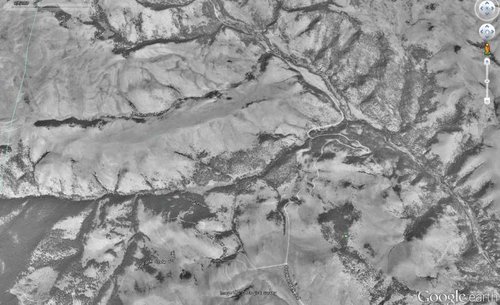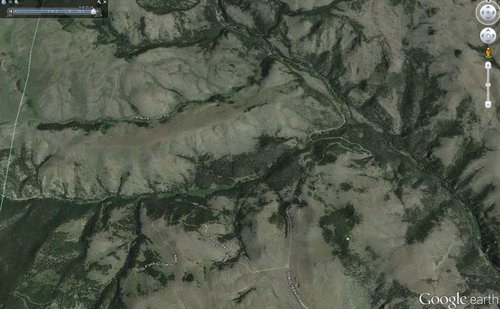I know some wonder the origin my sour taste for the current status of litigation on Federal Land Management projects. This lawsuit is a project RMEF has offered to help fund after significant interaction with the Forest Service and partners in the Elkhorn Working Group. The Elkhorns are the only Congressionally designated wildlife management lands in the entire Forest Service. The priority of management on these lands is to help wildlife.
Once again, the serial litigators are out trying to make some change by litigating a project that would be very good for elk.
http://helenair.com/news/natural-re...b530e516-bf9f-56b5-89d9-4304a476af0d.amp.html
In the article, lead litigator, Steve Kelly, claims this is a cattle grazing habitat manipulation project. He is clueless. The fact that elk and cattle are both grazers evidently cause him to preclude elk habitat projects from being implemented on Federal lands. They want no part of the planning and collaboration process, knowing the current model gives them the big stick of litigation and can gum up the works for years by litigation. When a system is set up that gives that kind of power to groups who refuse to participate in the planning process, the system needs some changes. Even if the Forest Service prevails in court, the costs and delays are still a huge waste of time, resources, and effort.
Kelly also cites that the elk are so far above objective that elk habitat improvement is not needed. If he had a clue as to how those objectives were artificially suppressed by the political process, he might have a different view of how elk habitat improvement might help the public land hunting in the Elkhorns. I really don't expect much different from him.
A lot of thought, consideration, and money is going into improving elk habitat on public lands, in hopes that work will give some help to counter the accumulation of elk that happen on private lands. Probably not enough in a state with the immense hunting pressure Montana has on public lands, but at least in some limited entry units like the Elkhorns, it will hopefully help. Litigation against these projects does nothing to help elk or the effort that such elk habitat improvements could be a tool to reduce accumulations of elk on private lands where they are off limits to hunters.
Expect me to advocate for litigation reform wherever and whenever possible. Reform can be made to still allow for those parties who litigate with discretion to not lose any options, yet hopefully force some of the serial litigators to find a new business model that gives incentive to participate and collaborate from the beginning, rather than opt out of the planning process in favor of litigating for cash.
I know there are instances where groups participate in the planning process and work hard toward solutions, yet when they are ignored litigation might be the only remaining option. This Elkhorns case, and many cases like it, are not those instances of "litigation as last resort."
As the article clearly demonstrates in the last paragraph, this is another example of "Litigation R Us." To quote......The lawsuit asks the court to halt the project and award attorney fees and other costs.
Once again, the serial litigators are out trying to make some change by litigating a project that would be very good for elk.
http://helenair.com/news/natural-re...b530e516-bf9f-56b5-89d9-4304a476af0d.amp.html
In the article, lead litigator, Steve Kelly, claims this is a cattle grazing habitat manipulation project. He is clueless. The fact that elk and cattle are both grazers evidently cause him to preclude elk habitat projects from being implemented on Federal lands. They want no part of the planning and collaboration process, knowing the current model gives them the big stick of litigation and can gum up the works for years by litigation. When a system is set up that gives that kind of power to groups who refuse to participate in the planning process, the system needs some changes. Even if the Forest Service prevails in court, the costs and delays are still a huge waste of time, resources, and effort.
Kelly also cites that the elk are so far above objective that elk habitat improvement is not needed. If he had a clue as to how those objectives were artificially suppressed by the political process, he might have a different view of how elk habitat improvement might help the public land hunting in the Elkhorns. I really don't expect much different from him.
A lot of thought, consideration, and money is going into improving elk habitat on public lands, in hopes that work will give some help to counter the accumulation of elk that happen on private lands. Probably not enough in a state with the immense hunting pressure Montana has on public lands, but at least in some limited entry units like the Elkhorns, it will hopefully help. Litigation against these projects does nothing to help elk or the effort that such elk habitat improvements could be a tool to reduce accumulations of elk on private lands where they are off limits to hunters.
Expect me to advocate for litigation reform wherever and whenever possible. Reform can be made to still allow for those parties who litigate with discretion to not lose any options, yet hopefully force some of the serial litigators to find a new business model that gives incentive to participate and collaborate from the beginning, rather than opt out of the planning process in favor of litigating for cash.
I know there are instances where groups participate in the planning process and work hard toward solutions, yet when they are ignored litigation might be the only remaining option. This Elkhorns case, and many cases like it, are not those instances of "litigation as last resort."
As the article clearly demonstrates in the last paragraph, this is another example of "Litigation R Us." To quote......The lawsuit asks the court to halt the project and award attorney fees and other costs.






